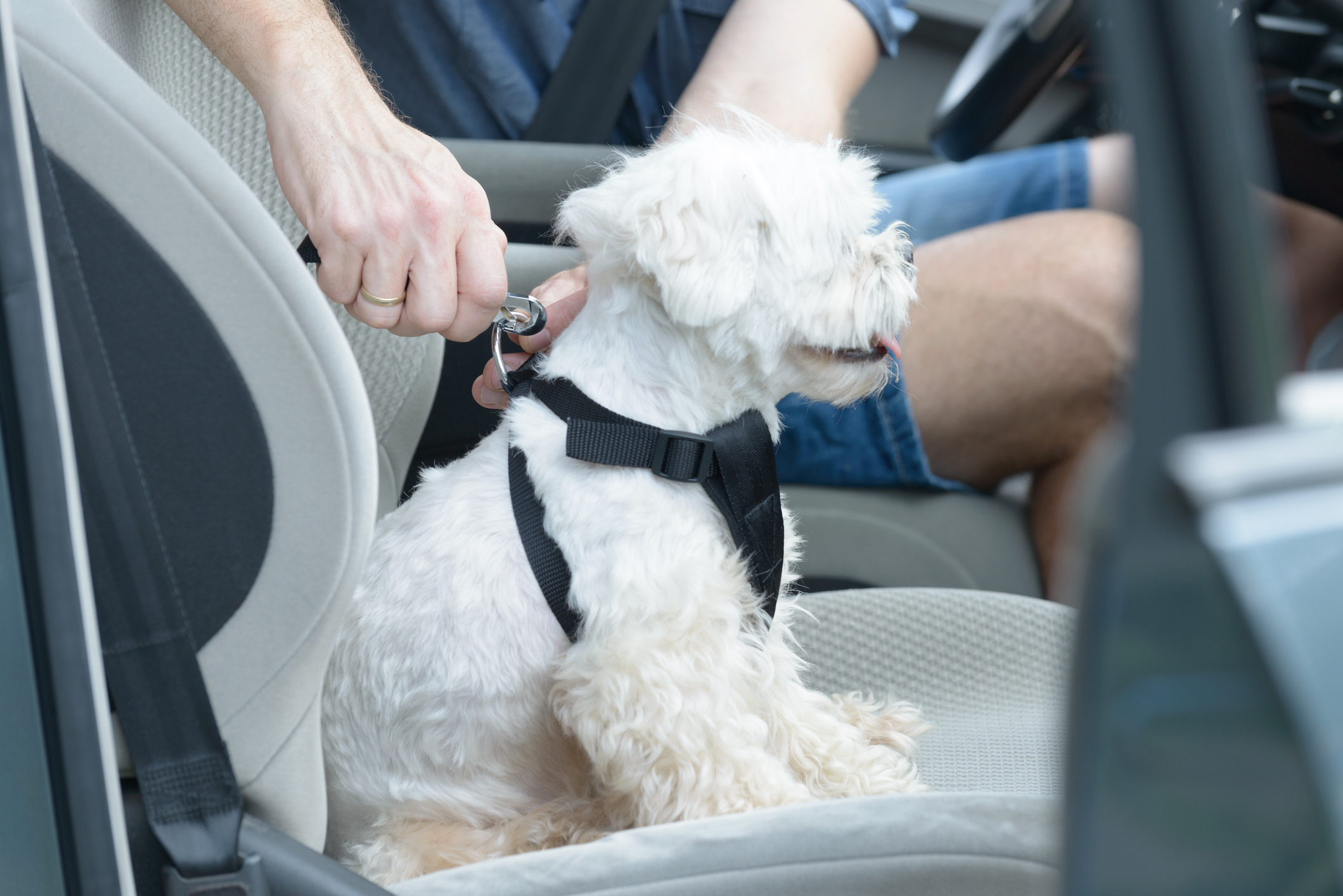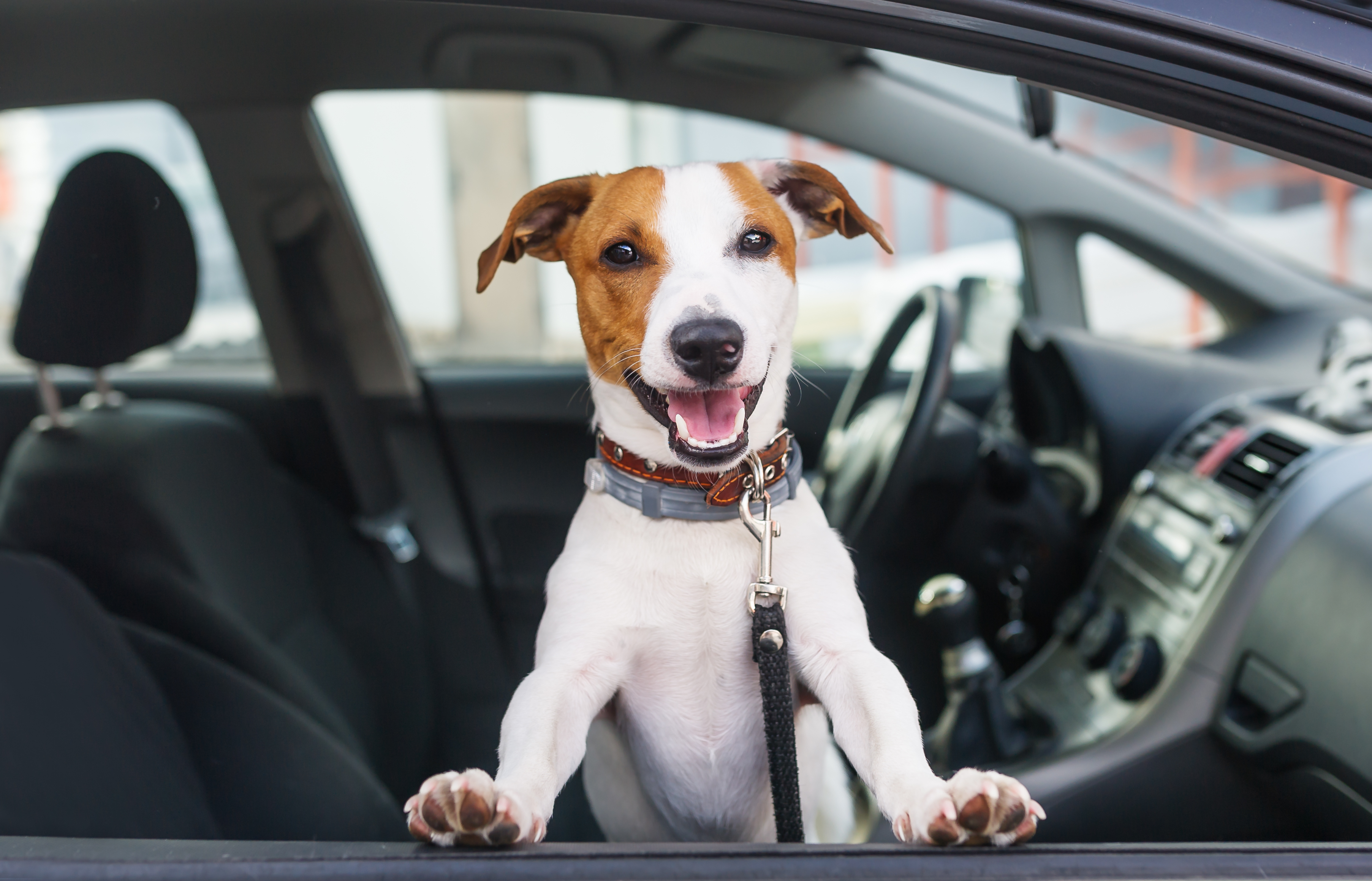
How to Relieve Your Dog’s Car Sickness
Similar to many humans who are unable to ride in the car for long stretches of time without feeling ill, dogs can suffer from motion sickness that leaves them feeling uneasy, nauseous and stressed—and makes a mess of your backseat. Often caused by the lack of development in the ear structures that help with balance, dog motion sickness is most often seen in young puppies, but it commonly afflicts older dogs, as well.
Most dogs will eventually outgrow motion sickness. However, if your dog equates car rides with a few bad encounters they had in their youth, they may continue to suffer symptoms well into adulthood, even after their ear structures have fully developed. If the only time your pup rides in the car is on their visits to the veterinarian, for example, the negative association can lead to high stress levels that can trigger feelings of sickness.
If your normally energetic pup becomes listless or drowsy during your drive, or you notice uncontrollable drooling or even vomiting, they may be suffering from motion sickness. You should also be on the lookout for other abnormal behaviors that your dog will use to communicate their discomfort, including the smacking or licking of the lips and excessive whining.
Treating dog motion sickness

There are medications available for pets who don’t outgrow motion sickness on their own. Before turning to them, though, there are a few steps you can take to try and improve your dog’s comfort and minimize the severity of their symptoms.
- Dog seat belt: Looking out of the side windows while riding can contribute to the onset of motion sickness. This means it is best for your dog to remain facing forward for the duration of the drive. To facilitate this forward orientation, many owners use doggy seat belts and car safety harnesses specifically designed to keep dogs in place while a car is in motion.
- Traveling crate: Depending on how well your dog responds to a crate environment, you may also consider using a travel create to keep your dog calm and comfortable during what may be a stressful ride. The crate should be well-ventilated and large enough for your dog to stand up, turn around and lie down comfortably. It should be strapped into your car’s seat belt for added safety.
- Temperature: Just as humans can become ill in cars that are too hot, dogs can, too. Keeping your dog temperate while in motion will be especially important in minimizing nausea. Ensure that your car remains cool and well-ventilated during your ride and open the windows a few inches to balance the car’s interior air pressure with the outdoor pressure to reduce feelings of illness.
- Toys and treats: When given in moderation, sugary treats may help reduce symptoms of nausea when riding in a car. When you are preparing for a ride, limit your pet’s food consumption on the day of the journey, then give them a small sugary treat, such as a jellybean, right before getting on the road. Keep in mind that if you do give your pup a treat to help alleviate their fears before a drive, they should never consume chocolate or treats that contain xylitol, as these are hazardous for their health. It may also help to leave toys, a favorite blanket or towel and treats in the car to help keep your dog calm.
Conditioning against dog motion sickness

For a more permanent and long-term solution to stress-related sickness, you and your pup will have to work together to build a solid foundation that rebuilds the relationship they have with your car. You can start small to increase your pet’s familiarity with your car; simply approach the car a few times without actually getting in to begin reducing their worries. When your dog has grown comfortable with this, you can spend time inside the car without turning the engine on. From there, your dog can graduate to short rides around the block or to places that they enjoy, such as the dog park or pet store.
If you and your pup are unable to overcome the battle against motion sickness at home, consult your veterinarian to learn more about some of the medications that can be used to make your dog more comfortable during each car ride. Ranging from over-the-counter antihistamines and anti-nausea drugs to prescription medications that can reduce vomiting and induce light sedation for serious cases, there are a number of treatments available that can help minimize the trauma your dog may associate with your car.
It may take some time, but with a little bit of patience and experimenting to find what works best for your pup, you and your dog can work toward longer car rides that you both enjoy.


